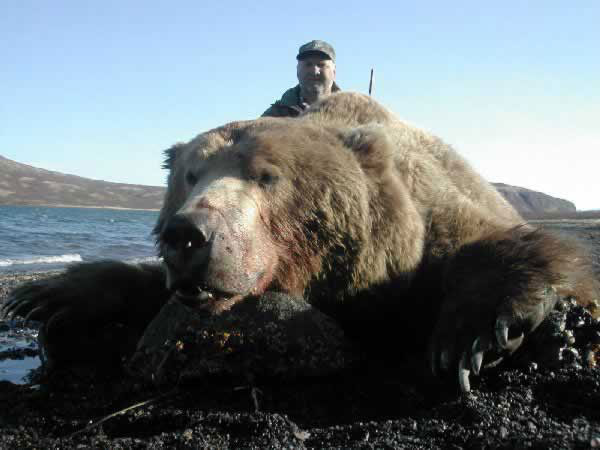While formerly listed separately by taxonomists, Alaska’s brown and grizzly bears are actually classified as a single species, Ursus arctos. That includes the famously oversized bruins of Kodiak Island, though these browns are now classified as a subspecies distinct from mainland bears, due to their genetic and physical isolation, as well as the fact that they have a slightly differing skull shape. Colloquially, though, most refer to the members of the species found in coastal areas where salmon is the primary food source as “browns,” and those found inland and in northern habitats as “grizzlies.”
But no matter what you call them, Alaska is certainly the foremost home of the brown bear, with over 98 percent of the United States’ and over 70 percent of the North American population. They range throughout the state, too, occurring virtually everywhere with the exception of the islands south of Frederick Sound in southeast Alaska, the islands west of Unimak in the Aleutian Chain, and the islands of the Bering Sea.
Within Alaska, population densities vary considerably, dependant mostly upon the productivity of the surrounding environment. For instance, in areas like the North Slope, studies reveal brown bear densities of as low as one bear for every 300 square miles. On the flip side, in areas like Admiralty Island in southeast Alaska (“Fortress of the Bears” to the local Natives; “Fear Island” to the early Russian explorers), densities as high as one bear per square mile have been found. Throughout much of Alaska, however, both north and south of the Alaska Range, bear densities seem to settle around one bear per every15 to 23 square miles.
As they’re North America’s dominant carnivore, and because Alaska offers unrivalled opportunities to successfully hunt the species, brown bear hunting remains popular across the state. Seasons are held in both the spring and fall in some areas, but only in the fall in others, so check Alaska Department of Fish and Game regulations carefully before even planning a hunt. Also note that any bear meat should be thoroughly cooked to prevent contracting trichinosis, a parasitic disease that can be fatal.
Lastly, an excellent guide to judging trophy brown bears and distinguishing between sexes of bears is the Take a Closer Look video which is available for viewing at most ADF&G offices.

